#Node.Js and Java
Text
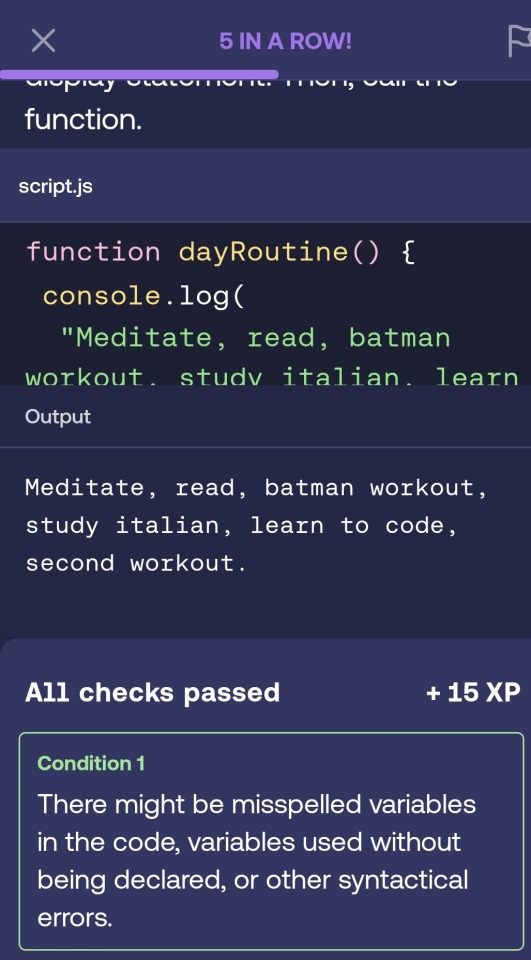


Learning to code with Mimo has been quite fun, it's almost like a duolingo for coding, been ejoying it quite a bit and learning a lot.
#project batman#batman#bruce wayne#martial arts#training#exercise#fitness#work out#kung fu#duolingo#mimo#mimo learn to code#computer science#computer programming#coding#java script#node.js#learn to code#computer skills#tech savy#polymath
12 notes
·
View notes
Text
Node.js vs Other Server-Side Technologies: Which is Best for Your Project
New Post has been published on https://www.codesolutionstuff.com/node-js-vs-other-server-side-technologies-which-is-best-for-your-project/
Node.js vs Other Server-Side Technologies: Which is Best for Your Project
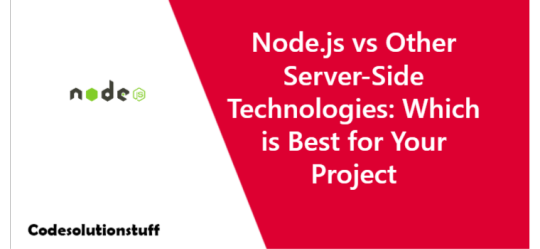
Node.js is a popular, open-source, cross-platform JavaScript runtime environment that is widely used for server-side programming. It is widely adopted for its event-driven, non-blocking I/O model, which makes it suitable for building scalable and high-performance applications. However, when it
#ease of development#Java#Node.js#Performance#PHP#Ruby on Rails#Scalability#server-side technologies
0 notes
Text
https://zeabros.com/react-native-development-services/

React Native Development Services Gurgaon
Zeabros Providing React Native Development Services in Gurgaon, Delhi, Noida, Kanpur, Pune, and Jaipur.
#Backend Development Services in Gurgaon#Golang Development Service Gurgaon#Node.Js Development Service Gurgaon#Java Development Service Gurgaon#UX Design Service Gurgaon#UI Design Service Gurgaon
0 notes
Text
Java with React JS
Java with React JS
Hello,
This is Henry from Intone Networks Inc., we are looking for Java with React JS at Jersey City, NJ(Hybrid) below I am sending job description kindly forward updated profile.
Job Title: – Java with React JS
Location: – Jersey City, NJ(Hybrid)
Duration: – Long term
Job Description
At least 10 Plus years of Programming experience with Java, J2EE, XML, and Web Services
Experience with Angular…

View On WordPress
0 notes
Text
#reactjs#reactnative#nodejs#development#developers#sites#angular#web developers#Node.js#javascript#programming#developer#frontend#backend#katlin#Java#health care
1 note
·
View note
Text
Node.js and Java are very distinctive programming languages and both have their pros and cons . Node.js is basically open-source JavaScript Framework which helps developers in creating a scalable website. Whereas Java is basically object oriented programming language. In this article developers will get to know the difference and importance of both the programming languages.
0 notes
Text
How to Install Redis On –Centos – WebPanel Server
How to Install Redis On –Centos – WebPanel Server
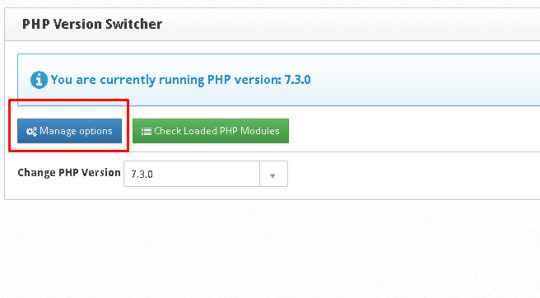
View On WordPress
0 notes
Text
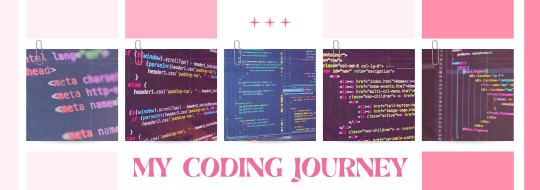
Hiya! My name is Izzy-Loa, and a Jr Web Developer and today, I thought it would be a great idea to just share my own personal coding journey! I have answered a lot of asks in the past about how I recommend other people to start their coding studies, what websites to learn from and roadmaps etc. But one question I kept having to repeat myself answering is the "Okay how did you get started?" - it is completely my fault not writing this down properly~! (I did actually)
Anyhoo, I'll just speed through my journey, sharing what I learnt at what times and what I'm currently doing now! ✨

☆ Starting from Scratch
I started coding back in 2017 during the summer break when I was just 15 years old. At that time, I didn't even know what coding was! It was my dad who suggested that I learn HTML. I hesitated at first, thinking HTML was some "complex high-level programming language". Little did I know, it was just a markup language...
I started with HTML and then moved on to CSS during that summer. However, once school started in September, I set coding aside and forgot about it. The following year, 2018, I decided to give it another shot and relearned HTML and CSS. But again dropped it because of school work and upcoming exams!

☆ The Turning Point
Fast forward to 2020, a year that marked a turning point!. I started creating websites using HTML and CSS. I briefly played with JavaScript but decided to focus on mastering HTML and CSS.
In January 2021, I made a significant decision. I dropped out of school due to personal reasons and decided to fully commit to programming, plus getting my first remote job (non-Tech). From there, I gradually delved into JavaScript a lot more and even dabbled in Python along the way. My learning process was on and off, but I was making progress! Around this time I learnt Git and GitHub!

☆ The Apprenticeship
Around September/October time, I applied for an apprenticeship. My skill set included HTML, CSS, Python, and basic JavaScript. I got accepted and continued to learn Python, delving into C# and Java as well. It was a challenging but rewarding experience! Happily dropped Java towards the end!
At work, I also learned SQL, working with Microsoft SQL Server and MySQL. I even explored .NET Framework and ASP.NET. It was a lot to take in, but I embraced the learning process! The older developers at the workplace were super helpful and very experienced - felt as though they were happy to give me all their knowledge as best they could~!

☆ Expanding My Knowledge
During my apprenticeship, around October 2022, I decided to further expand my skills. I enrolled in a front-end bootcamp, where I revisited HTML, CSS, and JavaScript. I also learned jQuery, Node.js, npm, and even ventured into React. Though, due to not practising it enough, I forgotten React and Node.js~!

☆ My Ongoing Journey
Currently, I'm continuing to explore Python and experimenting with Lua. I'm also revisiting JavaScript, jQuery, and recently, I've started working with SCSS (Sass) to streamline my CSS development - I highly recommend people in Web Development to learn SCSS!! I love it so much!
Looking ahead, my learning wishlist includes TypeScript, React, Vue.js, Angular, and C++. However, I'm not rushing into learning everything at once. I'm taking my time to absorb each language and framework thoroughly.

In summary, it has been a continuous evolution, from HTML and CSS to SQL, .NET Framework, and various other languages and tools. I've faced challenges and taken LOTS of breaks, but each step has brought me closer to becoming a proficient developer. I want to be better! But slowly and in good time!
Hope this was somewhat helpful to other people and yeah, have a nice day/night!

⤷ ○ ♡ my shop ○ my twt ○ my youtube ○ pinned post ○ blog's navigation ♡ ○
#resources#codeblr#coding#progblr#programming#studyblr#studying#computer science#tech#comp sci#programmer#about me#personal#academia#cs academia#light academia
69 notes
·
View notes
Text
The Roadmap to Full Stack Developer Proficiency: A Comprehensive Guide
Embarking on the journey to becoming a full stack developer is an exhilarating endeavor filled with growth and challenges. Whether you're taking your first steps or seeking to elevate your skills, understanding the path ahead is crucial. In this detailed roadmap, we'll outline the stages of mastering full stack development, exploring essential milestones, competencies, and strategies to guide you through this enriching career journey.

Beginning the Journey: Novice Phase (0-6 Months)
As a novice, you're entering the realm of programming with a fresh perspective and eagerness to learn. This initial phase sets the groundwork for your progression as a full stack developer.
Grasping Programming Fundamentals:
Your journey commences with grasping the foundational elements of programming languages like HTML, CSS, and JavaScript. These are the cornerstone of web development and are essential for crafting dynamic and interactive web applications.
Familiarizing with Basic Data Structures and Algorithms:
To develop proficiency in programming, understanding fundamental data structures such as arrays, objects, and linked lists, along with algorithms like sorting and searching, is imperative. These concepts form the backbone of problem-solving in software development.
Exploring Essential Web Development Concepts:
During this phase, you'll delve into crucial web development concepts like client-server architecture, HTTP protocol, and the Document Object Model (DOM). Acquiring insights into the underlying mechanisms of web applications lays a strong foundation for tackling more intricate projects.
Advancing Forward: Intermediate Stage (6 Months - 2 Years)
As you progress beyond the basics, you'll transition into the intermediate stage, where you'll deepen your understanding and skills across various facets of full stack development.
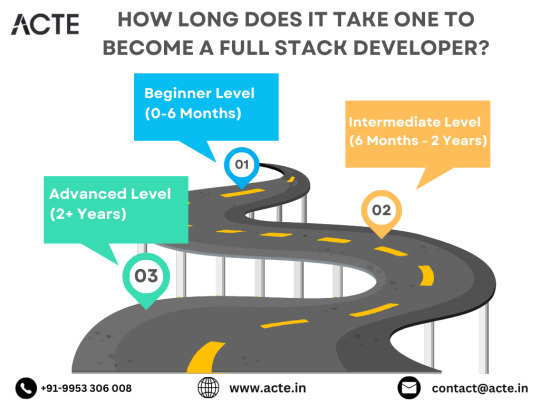
Venturing into Backend Development:
In the intermediate stage, you'll venture into backend development, honing your proficiency in server-side languages like Node.js, Python, or Java. Here, you'll learn to construct robust server-side applications, manage data storage and retrieval, and implement authentication and authorization mechanisms.
Mastering Database Management:
A pivotal aspect of backend development is comprehending databases. You'll delve into relational databases like MySQL and PostgreSQL, as well as NoSQL databases like MongoDB. Proficiency in database management systems and design principles enables the creation of scalable and efficient applications.
Exploring Frontend Frameworks and Libraries:
In addition to backend development, you'll deepen your expertise in frontend technologies. You'll explore prominent frameworks and libraries such as React, Angular, or Vue.js, streamlining the creation of interactive and responsive user interfaces.
Learning Version Control with Git:
Version control is indispensable for collaborative software development. During this phase, you'll familiarize yourself with Git, a distributed version control system, to manage your codebase, track changes, and collaborate effectively with fellow developers.
Achieving Mastery: Advanced Phase (2+ Years)
As you ascend in your journey, you'll enter the advanced phase of full stack development, where you'll refine your skills, tackle intricate challenges, and delve into specialized domains of interest.
Designing Scalable Systems:
In the advanced stage, focus shifts to designing scalable systems capable of managing substantial volumes of traffic and data. You'll explore design patterns, scalability methodologies, and cloud computing platforms like AWS, Azure, or Google Cloud.
Embracing DevOps Practices:
DevOps practices play a pivotal role in contemporary software development. You'll delve into continuous integration and continuous deployment (CI/CD) pipelines, infrastructure as code (IaC), and containerization technologies such as Docker and Kubernetes.
Specializing in Niche Areas:
With experience, you may opt to specialize in specific domains of full stack development, whether it's frontend or backend development, mobile app development, or DevOps. Specialization enables you to deepen your expertise and pursue career avenues aligned with your passions and strengths.
Conclusion:
Becoming a proficient full stack developer is a transformative journey that demands dedication, resilience, and perpetual learning. By following the roadmap outlined in this guide and maintaining a curious and adaptable mindset, you'll navigate the complexities and opportunities inherent in the realm of full stack development. Remember, mastery isn't merely about acquiring technical skills but also about fostering collaboration, embracing innovation, and contributing meaningfully to the ever-evolving landscape of technology.
#full stack developer#education#information#full stack web development#front end development#frameworks#web development#backend#full stack developer course#technology
6 notes
·
View notes
Text
live blogging complaints about job hunting
why the fuck is "soft skills" a linkedin skill
"see how you compare with 1154 other applicants"
obligatory entry level -> requires n years of experience true combo
"Our code base uses Node.js, Rust, Go, PHP, AWS, TypeScript, JavaScript, React Native, SQL and VueJS."
"Plus we want you to be able to use Java and Python as well."
five million AI startups
8 notes
·
View notes
Text
Top 20 Backend Development Tools In 2023
Backend development plays a crucial role in the operation and performance optimisation of web and mobile applications, serving as their foundational framework. In the context of the dynamic technological environment, it is imperative for developers to remain abreast of the most recent and effective backend development technologies. In the year 2023, a plethora of advanced tools have surfaced, leading to a significant transformation in the approach to backend development. Reach out to Nivida Web Solutions - a noted Web development company in Vadodara and let's craft a website that sets you apart.
This analysis aims to examine the leading 20 backend development tools projected for the year 2023, which possess the potential to optimise operational effectiveness, raise work output, and achieve exceptional outcomes.
1. Node.js:
Node.js continues to be a prominent contender in the realm of backend development, offering a resilient framework for constructing scalable, server-side applications through the utilisation of JavaScript. The asynchronous and event-driven nature of the system renders it highly suitable for real-time applications and microservices.
2. Express.js:
Express.js is a Node.js framework that offers a basic and flexible approach to backend development. It achieves this by providing streamlined routing, efficient handling of HTTP requests, and effective management of middleware. The software possesses a high degree of extensibility, allowing developers to create tailored solutions.
3. Django:
Django, a renowned Python framework, is widely recognised for its exceptional performance, robust security measures, and remarkable scalability. The framework adheres to the "batteries-included" principle, providing a wide range of pre-installed functionalities and libraries that enhance the speed and efficiency of the development process.
4. Flask:
Flask, an additional Python framework, is characterised by its lightweight nature and user-friendly interface. The framework offers fundamental capabilities for backend development and enables developers to incorporate additional functionalities as required, thus rendering it very adaptable.
5. Spring Boot:
Spring Boot, which is built on the Java programming language, streamlines the process of creating applications that are ready for deployment by employing a convention-over-configuration methodology. The platform provides a variety of functionalities to construct resilient and scalable backend systems. Embark on a digital journey with Nivida Web Solutions - the most distinguished Web development company in Gujarat. Let's create a stunning, functional website tailored to your business!
6. Ruby on Rails:
Ruby on Rails, also referred to as Rails, is renowned for its high level of efficiency and user-friendly nature. The framework employs the Ruby programming language and places a strong emphasis on convention over configuration, facilitating expedited development processes.
7. ASP.NET Core:
ASP.NET Core is a highly adaptable and efficient cross-platform framework that facilitates the development of backend solutions through the utilisation of the C# programming language. The product provides exceptional performance, robust security measures, and effortless compatibility with many systems.
8. Laravel:
Laravel, a framework developed using the PHP programming language, is well-acknowledged for its sophisticated syntax and user-centric functionalities. The utilisation of this technology streamlines intricate operations such as authentication, caching, and routing, hence facilitating an expedited development procedure.
9. NestJS:
NestJS is a Node.js framework that adheres to the architectural patterns established by Angular, hence exhibiting a progressive nature. The software possesses a high degree of modularity, hence facilitating the scalability and maintenance of applications. NestJS places a strong emphasis on the principles of maintainability and testability.
10. RubyMine:
RubyMine is an influential integrated development environment (IDE) designed specifically for the purpose of facilitating Ruby on Rails development. The software provides advanced code assistance, navigation, and debugging functionalities, hence augmenting the efficiency of Ruby developers. Looking for a standout web presence? Let Nivida Web Solutions - the most popular Web development company in India craft a website that impresses. Reach out now and let's get started!
11. PyCharm:
PyCharm, an integrated development environment (IDE) designed specifically for the Python programming language, is extensively utilised in the realm of backend development. The software offers intelligent code completion, comprehensive code analysis, and integrated tools to facilitate fast development and debugging processes.
12. IntelliJ IDEA:
IntelliJ IDEA, a widely utilised integrated development environment (IDE), provides comprehensive support for multiple programming languages, encompassing Java, Kotlin, and many more. The software is renowned for its advanced coding assistance and efficient capabilities, which greatly assist backend developers in producing code of superior quality.
13. Visual Studio Code (VSCode):
VSCode is a code editor that is known for its lightweight nature and open-source nature. Due to its extensive extension library and high level of customizability, this platform is widely favoured by backend developers due to its versatile nature.
14. Postman
Postman is an efficient and powerful application programming interface (API) testing tool that streamlines the process of doing backend testing and facilitating communication among developers. This tool facilitates the efficient design, testing, and documentation of APIs, hence assuring a smooth integration process. Every click counts in the digital world. Partner with Nivida Web Solutions - one of the top Web development companies in Vadodara to create a user-friendly, engaging website. Choose Nivida Web Solutions to boost your online impact!
15. Swagger:
Swagger, currently recognised as the OpenAPI Specification, serves to enable the process of designing, documenting, and evaluating APIs. The standardised structure of API description facilitates the seamless and uncomplicated integration process.
16. MongoDB:
MongoDB, a widely adopted NoSQL database, has notable advantages in terms of scalability, flexibility, and superior performance. Due to its capacity to effectively manage substantial quantities of data and accommodate various data models, it is extensively employed in the realm of backend development.
17. PostgreSQL:
PostgreSQL, an open-source relational database management system, is widely recognised for its robustness, adaptability, and comprehensive SQL capabilities. This option is highly recommended for projects that necessitate a resilient backend data repository.
18. Redis:
Redis is an essential component for caching and real-time analytics due to its ability to store data structures in memory. The indispensability of this technology lies in its high performance and its capability to effectively manage data structures, hence facilitating the optimisation of backend processes.
19. Kafka:
Apache Kafka is a distributed streaming platform that handles real-time data processing. It's commonly used for building scalable, fault-tolerant backend systems that require high-throughput data ingestion and processing. Dive into the digital era with a website that wows! Collaborate with Nivida Web Solutions - one of the leading Web development companies in Gujarat and boost your online presence.
20. Docker:
Docker is a containerization technology that facilitates the streamlined deployment and scalability of programs. The utilisation of containers enables backend developers to encapsulate their programmes and associated dependencies, hence ensuring uniformity and adaptability across diverse contexts.
Final Thoughts:
It is of utmost importance for developers to be updated on the most recent backend development technologies in order to effectively offer applications that are efficient, scalable, and safe. The compendium of the foremost 20 backend development tools projected for the year 2023 encompasses an extensive array of functions, adeptly accommodating the multifarious requirements of backend development endeavours. These technologies provide developers with the ability to enhance their backend development endeavours and provide users with outstanding experiences, whether through the creation of real-time applications, database management, or performance optimisation. Your website is your digital storefront. Make it appealing! Contact Nivida Web Solutions - one of the most renowned Web development companies in India and design a website that captivates your audience. Get started now!
7 notes
·
View notes
Text
Choosing the Best Server-Side Language in 2023
New Post has been published on https://www.codesolutionstuff.com/choosing-the-best-server-side-language-in-2023/
Choosing the Best Server-Side Language in 2023

As we move into 2023, the technology landscape for server-side programming continues to evolve. With so many options available, choosing the best server-side language for your next project can be a challenge. In this blog, we'll take a look at some of the top server-side languages and help you
#ease of development#Java#Node.js#Performance#PHP#Python#Ruby on Rails#Scalability#server-side languages
0 notes
Text

Digital Transformation Service Gurgaon
https://zeabros.com/digital-transformation-services-gurgaon/
#Flutter Development services Gurgaon#Fornt-end Development Service Gurgaon#Angular Development Service Gurgaon#React-Js Development Services Gurgaon#Backend Development Service Gurgaon#Golang Development Service Gurgaon#Node.Js Development Service Gurgaon#Java Development Service Gurgaon
0 notes
Text
Null Stack to Full Stack
OVERVIEW
Full stack technology refers to the entire depth of a computer system application, and full stack developers straddle two separate web development domains: the front end and the back end.
The front end includes everything that a client, or site viewer, can see and interact with. By contrast, the back end refers to all the servers, databases, and other internal architecture that drives the application; usually, the end-user never interacts with this realm directly.
The easiest way to put the full stack into perspective is to imagine a restaurant. The front end encompasses the well-decorated, comfortable seating areas where visitors enjoy their food. The kitchen and pantry make up the “back end” and are typically hidden away from the customer’s view. Chefs (developers) gather permanently stored materials from the pantry (the database) and perform operations on it in the kitchen (the server), and then serve up fully-prepared meals (information) to the user.
ADVANTAGES OF LEARNING FULLSTACK DEVELOPMENT
You can master all the techniques involved in a development project
You can make a prototype very rapidly
You can provide help to all the team members
You can reduce the cost of the project
You can reduce the time used for team communication
You can switch between front and back end development based on requirements
You can better understand all aspects of new and upcoming technologies
SKILLS NEEDED
In this case, you might find various things in the internet. They all might vary. But I am keeping things simple. Among the things I am going to share, you need to focus on one stack instead of all of them. So, here are some of the skills needed to be a fullstack developer.
Front-end programming technologies: HTML, CSS, JavaScript, Angular, ReactJS, Bootstrap, jQuery, SASS, Tailwind etc.
Back-end programming technologies:Python, NodeJS, Django, Express etc.
Database: PostgreSQL, MongoDB, MySQL, etc.
Version Control System: git, GitHub, GitLab, etc
HTTPS and REQUEST Methods (GET, POST, PUT, DELETE, OPTIONS)
Now, it iis important to understand that, the basics are same for all stacks but then the technologies vary. For example the frontend can be built with either React, Angular or Vue or any other framework/library. On the other hand, the backend can be built with either of Node.js, Django (Python) or Spring Boot (Java) or any other framework. I will go to that in the coming lines.
ROADMAP / PLAN FOR THE FIRST SIX MONTHS
About this, there might be multiple other roadmaps that you can follow on your path to become a fullstack developer. I came up with the idea that this path, that I am about to share, can be a planned start to your journey with all the content structured at the right time. So, let's see the plan for the first six months.
🔵 Month 1: HTML, CSS, Javascript
The basic skills required to create a website in HTML and CSS. Javascript adds functionalities to a website and makes the project responsive. HTML is for structure and CSS for Styling. DOM Manipulation and Responsive Web Design are important to practice. Learn about these from W3Schools.
🔵 Month 2: Web Design and Frameworks, Git, HTTPs
Work on Open Source Projects. Once you have good practice with HTML and CSS you can use frameworks like Bootstrap or Material CSS which makes it easy to create websites. Alongside that, it is very important to learn about version control systems (preferrably git) so that you can save and manage your code at GitHub, GitLab, BitBucket or any other similar tool. Also, it is important to learn about HTTPS and REQUEST METHODS (GET, POST, PUT, DELETE and OPTIONS).
🔵 Month 3: Javascript Programming Language
The most important skill and most asked in Interviews and Job portals for Web Development are Javascript. You can expect a lot of interview questions from Javascript, So it's important to learn how javascript works, data structures, and asynchronous javascript.
🔵 Month 4 & 5: Frontend and Backend
Once you are thorough with the above concepts then you can take your skills to the next level by learning Javascript frameworks/libraries like React and Node JS. Point to be noted, I am a big fan of MERN (Mongo, Express, React, Node) stack, so I am always talking about React and Node. But there are other options as well.
Other options:
Frontend: Angular, Vue or any other frontend technology
Backend: Django, Flask, Spring Boot, ASP.Net or any other backend technology
Please do some research in google about the 'FULLSTACK TECH STACKS' and choose the one that you are the most comfortable with. Just a reminder, if you want to be a Java Fullstack Developer, then you need to have Java knowledge before stepping on to learning Fullstack development. Same case goes for Python, C# or any other technologies.
Most importantly, when you start learning a new technology, please start by learning from the official documentation of each individual technology. Then maybe go for other resources from the internet.
🔵 Month 6: Database and Projects
In the final month, create a portfolio and create projects using frontend and backend technologies you’ve learnt. Also, an important skill to have is knowledge of Database Management Systems like PostgreSQL, MySQL and MongoDB. Also, you need to understand how to connect the Database to Server using the backend Framework.
LEARNING RESOURCES OF FULLSTACK DEVELOPMENT
In the internet today, you can find various courses and tutorials on Fullstack development. But I know for sure that Freecodecamp website as well as YouTube channel covers all stack, so you can easily learn from them. On the other hand, there is The Odin Project. You can learn about JavaScript Fullstack Developer or Ruby on Rails Fullstack Developer. Here are the links to them.
Freecodecamp Website
Freecodecamp YouTube Channel
The Odin Project
Of course, as I said, you can look for courses in other websites as well. Here are some of the best platforms to look for courses.
Codecademy
Coursera
EdX
PROJECT IDEAS
Here are some projects that you can try when you are learning or after you have gone through all the things needed.
E-commerce website
Food delivery app
Social media app
Chat messaging app
Content management system
Project management app
Gym Tracking System
Real-time Chat App
Bug Report App
Hotel Booking App
Staff Management System
Online Store
INTERVIEW PREPS AND RESOURCES
Remember that a fullstack developer job is a vast space and thus there are many things that you need to keep focus on to ace the interviews. Here are some points where you need to take special care of for the interviews.
Javascript Programming Language and Data Structures
CSS Concepts like Flexbox, Grid, Inheritance, Specificity, etc.
React JS and new features e.g: Context API and Hooks
REST API’s and SQL and DBMS
HTTPS, Requests, Response, Servers.
Of course there are more things to focus as well, so research about the most important topics from the internet and then take special care in preparing for those questions.
Here are a few links to resources which will help you preparing for the interviews.
Coding Interview University
Interview Cake
Interview Bit
Tech Interview Handbook
Fullstack Cafe
Word of advice for newbies
Please don’t wait for people to spoon-feed you with every single resource and teachings because you’re on your own in your learning path. So be wise and learn yourself.
About Me
I am Ishraq Haider Chowdhury from Bangladesh, currently living in Bamberg, Germany. I am a fullstack developer mainly focusing on MERN Stack applications with JavaScript and TypeScript. I have been in this industry for about 9 years and still counting. If you want to find me, here are some of my social links....
Instagram
TikTok
YouTube
Facebook
Twitter
GitHub
#programming#webdevelopment#coding#fullstackdevelopment#appdevelopment#softwaredevelopment#webdeveloper#reactjs#nodejs#vuejs#pythonprogramming#python#javascript#typescript#frontenddevelopment#backenddevelopment#learnprogramming#learn to code#fullstack#fullstackdeveloper
71 notes
·
View notes
Text
Exploring the Difference Between Web Development and App Development
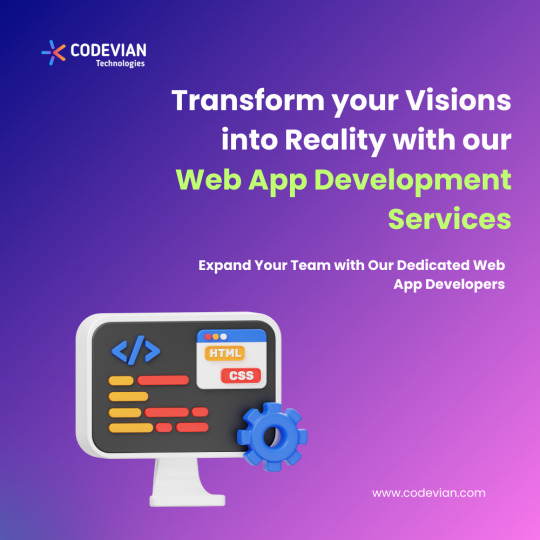
Hey there, tech enthusiasts! So, you've heard about web development and app development, but you're not quite sure what sets them apart? Don't worry, I'll break it down for you in simple terms!
First things first, what exactly is web development? Well, think of it like building a house on the internet! Web development involves creating websites or web applications that can be accessed through a web browser, like Google Chrome or Safari. It's all about designing, building, and maintaining websites that people can visit and interact with online.
Now, let's talk about app development. This is like building a cozy little home on your smartphone or tablet! App development involves creating mobile applications that are installed directly onto your device, like games, social media apps, or productivity tools. It's all about designing, building, and maintaining applications that people can download and use on their mobile devices.
So, what's the difference between web development and app development? Here are a few key distinctions:
Platform: The biggest difference between web development and app development is the platform they're built for. Web app development services focuses on creating websites or web applications that are accessed through a web browser on desktop computers or mobile devices. App development, on the other hand, focuses on creating mobile applications that are installed directly onto a device and accessed through an icon on the home screen.
Technology: Web development typically involves technologies like HTML, CSS, and JavaScript for creating the front end (what users see and interact with) and languages like PHP, Python, or Node.js for creating the back end (the server-side logic). App development, on the other hand, often involves languages like Java or Kotlin for Android development, Swift or Objective-C for iOS development, or frameworks like React Native or Flutter for cross-platform development.
Distribution: Web applications are usually accessible to anyone with an internet connection and can be accessed through a web browser without the need for installation. Mobile applications, on the other hand, need to be downloaded and installed onto a device from an app store like the Apple App Store or Google Play Store.
User Experience: The user experience of web applications and mobile applications can be quite different. Web applications are designed to work across different devices and screen sizes, so they often have a responsive design that adapts to fit the user's device. Mobile applications, on the other hand, are specifically designed for use on mobile devices and can take advantage of features like touch screens, GPS, and push notifications.
In conclusion, while web development and app development share some similarities, such as creating digital experiences for users, they also have key differences in terms of platform, technology, distribution, and user experience. Whether you're interested in building websites or mobile applications, both fields offer exciting opportunities to unleash your creativity and make an impact in the digital world!
2 notes
·
View notes
Text
Mastering Fullstack Development: Unifying Frontend and Backend Proficiency
Navigating the dynamic realm of web development necessitates a multifaceted skill set. Enter the realm of fullstack development – a domain where expertise in both frontend and backend intricacies converge seamlessly. In this comprehensive exploration, we'll unravel the intricacies of mastering fullstack development, uncovering the diverse responsibilities, essential skills, and integration strategies that define this pivotal role.
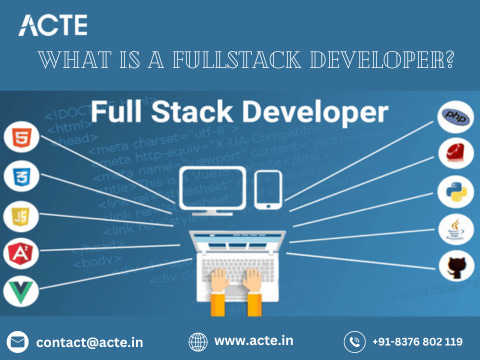
Exploring the Essence of Fullstack Development:
Defining the Role:
Fullstack development epitomizes the fusion of frontend and backend competencies. Fullstack developers are adept at navigating the entire spectrum of web application development, from crafting immersive user interfaces to architecting robust server-side logic and databases.
Unraveling Responsibilities:
Fullstack developers shoulder a dual mandate:
Frontend Proficiency: They meticulously craft captivating user experiences through adept utilization of HTML, CSS, and JavaScript. Leveraging frameworks like React.js, Angular.js, or Vue.js, they breathe life into static interfaces, fostering interactivity and engagement.
Backend Mastery: In the backend realm, fullstack developers orchestrate server-side operations using a diverse array of languages such as JavaScript (Node.js), Python (Django, Flask), Ruby (Ruby on Rails), or Java (Spring Boot). They adeptly handle data management, authentication mechanisms, and business logic, ensuring the seamless functioning of web applications.
Essential Competencies for Fullstack Excellence:
Frontend Prowess:
Frontend proficiency demands a nuanced skill set:
Fundamental Languages: Mastery in HTML, CSS, and JavaScript forms the cornerstone of frontend prowess, enabling the creation of visually appealing interfaces.
Framework Fluency: Familiarity with frontend frameworks like React.js, Angular.js, or Vue.js empowers developers to architect scalable and responsive web solutions.
Design Sensibilities: An understanding of UI/UX principles ensures the delivery of intuitive and aesthetically pleasing user experiences.

Backend Acumen:
Backend proficiency necessitates a robust skill set:
Language Mastery: Proficiency in backend languages such as JavaScript (Node.js), Python (Django, Flask), Ruby (Ruby on Rails), or Java (Spring Boot) is paramount for implementing server-side logic.
Database Dexterity: Fullstack developers wield expertise in database management systems like MySQL, MongoDB, or PostgreSQL, facilitating seamless data storage and retrieval.
Architectural Insight: A comprehension of server architecture and scalability principles underpins the development of robust backend solutions, ensuring optimal performance under varying workloads.
Integration Strategies for Seamless Development:
Harmonizing Databases:
Integrating databases necessitates a strategic approach:
ORM Adoption: Object-Relational Mappers (ORMs) such as Sequelize for Node.js or SQLAlchemy for Python streamline database interactions, abstracting away low-level complexities.
Data Modeling Expertise: Fullstack developers meticulously design database schemas, mirroring the application's data structure and relationships to optimize performance and scalability.
Project Management Paradigms:
End-to-End Execution:
Fullstack developers are adept at steering projects from inception to fruition:
Task Prioritization: They adeptly prioritize tasks based on project requirements and timelines, ensuring the timely delivery of high-quality solutions.
Collaborative Dynamics: Effective communication and collaboration with frontend and backend teams foster synergy and innovation, driving project success.
In essence, mastering fullstack development epitomizes a harmonious blend of frontend finesse and backend mastery, encapsulating the versatility and adaptability essential for thriving in the ever-evolving landscape of web development. As technology continues to evolve, the significance of fullstack developers will remain unparalleled, driving innovation and shaping the digital frontier. Whether embarking on a fullstack journey or harnessing the expertise of fullstack professionals, embracing the ethos of unification and proficiency is paramount for unlocking the full potential of web development endeavors.
#full stack developer#full stack course#full stack training#full stack web development#full stack software developer
2 notes
·
View notes